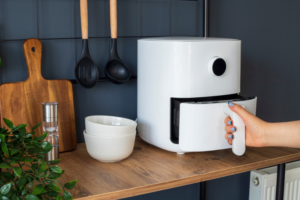For any home cook, the cutting board is a culinary battlefield, where vegetables are vanquished and meals are meticulously prepped. But with so many materials vying for countertop real estate, choosing the right one can feel like a culinary conundrum. Fear not, fellow foodies! This guide will equip you with the knowledge to confidently conquer the cutting board aisle.
Single-block wood: A classic choice, exuding warmth and natural beauty. Wood boasts excellent grip, preventing knives from slipping, and its natural antibacterial properties help combat foodborne illness. However, wood requires regular maintenance, needs to be oiled to prevent drying, and is susceptible to warping and staining.

Popular options include teak, walnut, and maple. For the ultimate knife-friendliness and durability, consider end-grain wood boards. They’re pricey, but a chef’s investment.
Plastic: Lightweight, affordable, and dishwasher-safe, plastic boards are the convenience kings. They’re hygienic, non-porous, and come in a variety of colors. However, plastic can dull knives faster and may harbor bacteria in scratches. Also a source of microplastics in human food.

Opt for BPA-free, high-density polyethylene boards for the safest option.
Bamboo: Eco-conscious cooks rejoice! Bamboo is a rapidly renewable resource with natural antibacterial properties. It’s also lightweight, durable, and knife-friendly. However, bamboo boards can warp if not properly dried and may not withstand heavy chopping.

Steel: Professional chefs love the precision and durability of steel boards. They’re non-porous, easy to clean, and resist knife marks. However, steel can be harsh on knives and may cause clanging noises. Opt for rubberized feet to prevent slipping.

Picking Your Perfect Match:
- Consider your cooking style: Do you wield a cleaver like a samurai or meticulously slice herbs? A thick, sturdy board is ideal for heavy chopping, while a thinner, lighter board is perfect for delicate tasks.
- Maintenance matters: If you’re time-pressed, plastic or bamboo might be your best bet. Wood lovers, be prepared for regular oiling and hand-washing.
- Budget battles: Plastic reigns supreme in affordability, while single-block wood and steel command a premium. Bamboo falls somewhere in between.
- Aesthetics matter: Let your kitchen speak your style! Wood adds warmth, plastic offers pops of color, and steel exudes a sleek professionalism.
So, there you have it! choose the perfect, the right board can make all the difference in your kitchen and cooking.
Remember: Regardless of your choice, proper hygiene is key. Wash your cutting board thoroughly after each use and avoid cross-contamination.

















Leave a Reply